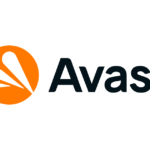8 Web Design Principles that Will Boost Your Conversion Rate
Conversion Rate
When visitors to your website find a call to action (CTA) button and click on it then a conversion has taken place. The goal of every marketer is to increase these conversions.
The conversion rate is simply the percentage of visitors out of the total number of visitors that completed a CTA.
There are many strategies that can be formulated to increase the conversion rate and one of the most important ones is the design of the website itself and the components within them.
When the web design is optimized the conversion rate is better.

Here’s a look at 8 web design principles that can help you boost your conversion rate.
1. Readability
Readability is a big factor in helping conversion rate. Obviously, the objective is for your customers to read your content. It is here that typography is vital. Often, brands make the mistake of choosing style over readability and pay the price for distortion in information. You should use typos that are highly readable.
2. Visual appeal
You can’t single out one parameter for visual appeal.
There are several parameters that need to be addressed. Color, layout, placement of important pieces of information and use of negative space are some of the important parameters. You can use tools available from principles of photography, psychology, visual design, user interface design and user experience design. You can also use some interesting tools such as Adobe’s color wheel, F-layout, Z-layout, open layout and box layout, and rule of thirds.
You should note that software is what determines visual appeal as seen by readers or viewers.
Thus, you must employ all tools that can close the gap between the requirements of software and the expectations of the user.
3. Choice of landing pages
Landing pages are an important part of web design.
They are call to action (CTA) pages to the viewer. You should use this page effectively by giving appropriate CTA signals.
For instance, if your goal is to explain something graphically then a video landing page is beneficial.
Videos are becoming more important for viewers to relate to a product or a brand and you can adapt suitably depending on the goal you want to reach. Since paid ads and SEO are different you must create unique landing pages suited for each objective.
4. Optimal choices
A law (Hick’s Law) states that the time it takes for an individual to make a decision is directly proportional to the possible choices he or she has.
When customers are faced with more choices they can handle, they tend to lose interest and skip the website. You should limit choices to a manageable number from the reader’s point of view.
5. Speed of loading web pages
In the Internet age of rapid communication people today want instant gratification. This applies to loading of pages on the website. Readers get annoyed if the website or web page takes too long to load.
According to one research, a delay of page response by 1 second can cause a reduction of conversions by 7%. This is too severe a hit and must be avoided at all costs by ensuring your website and web pages load very fast.
6. Use breadcrumbs judiciously
If your website is large and has many web pages and users want to navigate back and forth and know where they are then using breadcrumb navigation is a good solution. Breadcrumbs allow the users to reach higher level pages faster. You can use findings from studies such as the one done by Nielsen Norman Group to let the breadcrumbs read from left to right. This is because users spend 80% of their time viewing the left half of the page.
7. Consistent branding
Viewers like familiarity and it is advantageous if you can be consistent in your branding throughout your website. You can repeat a common branding on all pages to reinforce your brand.
8. Avoid distractions
Sliders and carousels are becoming distractions rather than influencers. They waste time for viewers and limit the space available to you for better communication. Use them only if they can help achieve your goal.
While these principles can help you in your web design it is perhaps advisable to consult with a professional New Orleans web design company who can help you design a new website or revamp your existing website taking into consideration the above web design principles.
A website is a composite whole for viewers who see the finished product created by you.
They relate to the website if what you have created is pleasing to them and easy to navigate. It is possible that you would have created the separate elements independently and then integrated them to present the final picture to the viewer. It is here that you must consider the Gestalt Principle – the law of similarity – carefully.
The law says that when the combination of human eye and brain perceives something it sees the whole differently and not necessarily as formed by individual parts of that whole. Thus, your final product needs to be something more than the sum of its individual parts. Web design is just that.
References:
- https://customerthink.com/8-creative-web-design-tips-to-boost-your-conversion-rate/
- https://blog.hubspot.com/marketing/navigation-breadcrumbs
- https://www.wordstream.com/conversion-rate
- https://www.crazyegg.com/blog/website-design-best-practices/
















